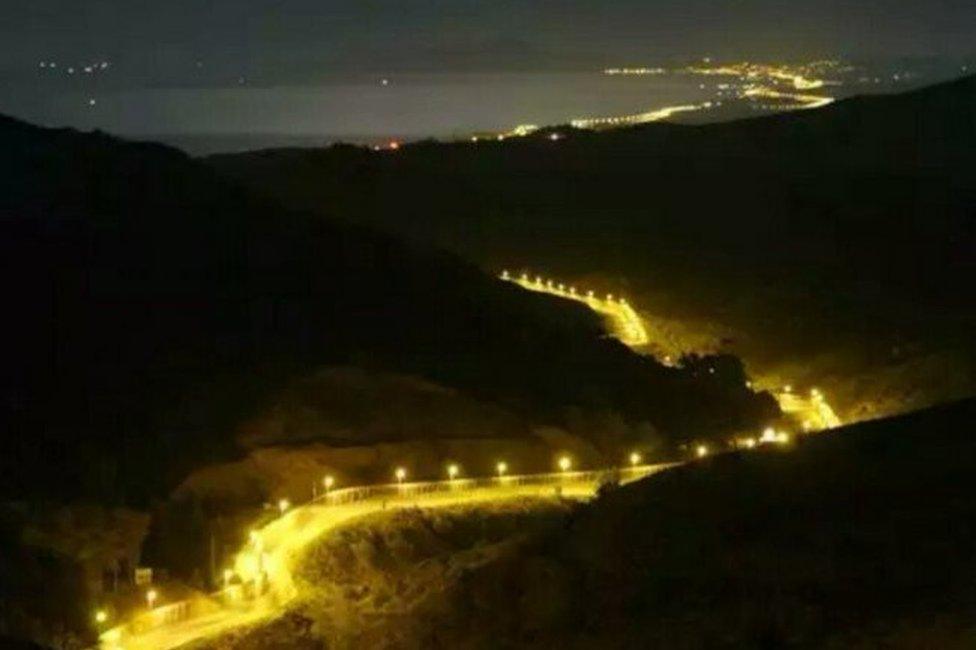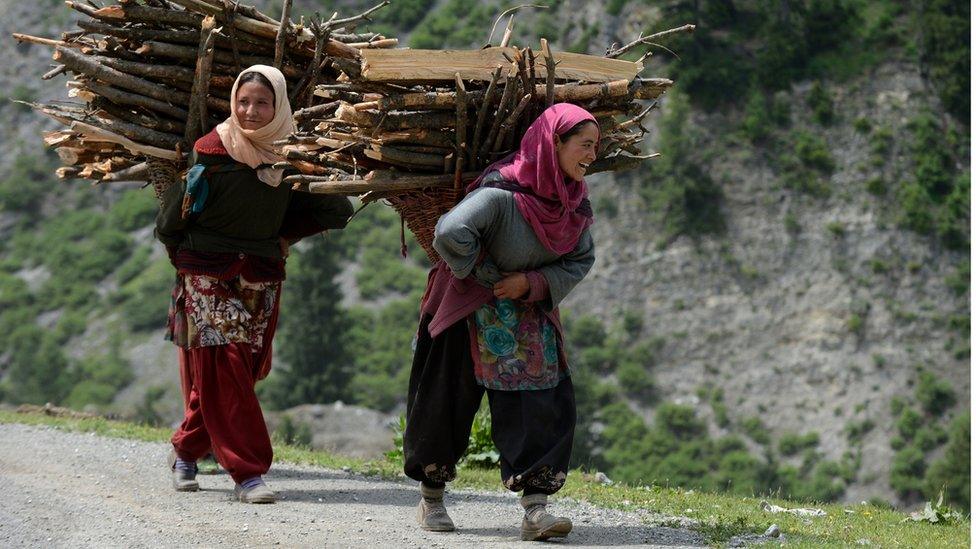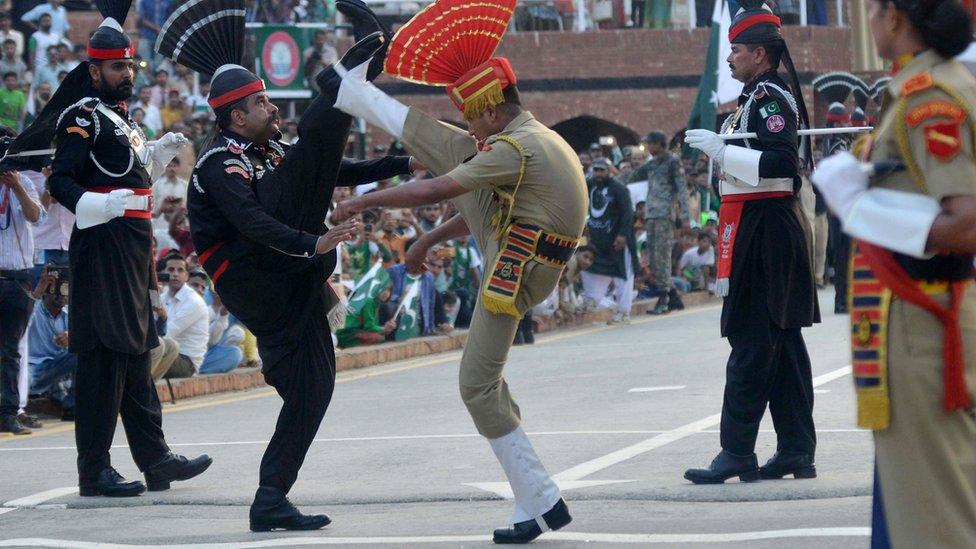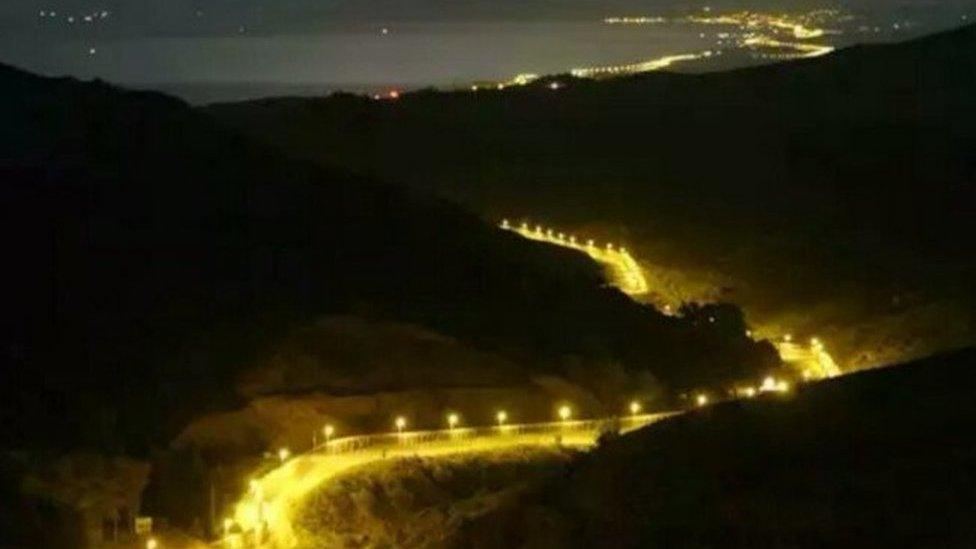Kashmir fake photo: Fallout from the UN speech by Pakistan's Maleeha Lodhi
- Published

When Pakistan's permanent representative to the United Nations, Maleeha Lodhi, held up a photograph of a scarred girl at the United Nations last weekend, she said she was offering proof of "Indian brutality" in Kashmir.
But the photo turned out to be that of a 17-year-old Palestinian girl, taken in Gaza in 2014 by award-winning photographer Heidi Levine. The teenager had been injured by shrapnel in an Israeli attack.
How did it come about?
Kashmir has been a bone of contention between India and Pakistan since 1947 and the South Asian neighbours have fought two fully fledged wars and a limited conflict over the disputed region.
Earlier that weekend, their representatives had been involved in a bitter war of words at the UN General Assembly.
Pakistan's Prime Minister, Shahid Khaqan Abbasi, accused India of "war crimes" in Kashmir and of "exporting terror" to Pakistan.
In response, Indian envoy Eenam Gambhir described Pakistan as "Terroristan with a flourishing industry producing and exporting global terrorism". Foreign Minister Sushma Swaraj said India had "produced scholars, doctors, engineers" while Pakistan had "produced terrorists".
Islamabad, too demanded its right to reply, and Ms Lodhi described India as "the mother of terrorism in South Asia" and called on the UN to "take steps to investigate India's massive human rights violations in Kashmir".
That's when she pulled out the photograph.
'False narrative'
It's often said that a picture is worth a thousand words, but as Ms Lodhi has discovered, a fake picture is worth a whole lot of trouble.
On Monday, Indian diplomat Paulomi Tripathi told the UN General Assembly that Pakistan was using "a fake picture to push a completely false narrative".
She showed a photograph of her own - of the Indian army officer Ummer Fayaz who was dragged out of a wedding party and killed by militants in Kashmir in May. This was the "real picture of pain inflicted by the nefarious designs of Pakistan", the diplomat said.
The Indian government has also been caught out in the past trying to pass off images from other parts of the world as its own. But Ms Lodhi invited far greater ridicule, because hers involved the contentious topic of Kashmir.

In June, India's Home Ministry was mocked after claiming this photo showed its own border fence. It actually shows the border between Morocco and the Spanish enclave Ceuta.
'Disrepute'
In Pakistan, Ms Lodhi's contribution had initially lifted the doom and gloom that descended after the Indian external affairs minister's UN speech.
But this was short-lived.
Ms Lodhi had claimed the image depicted a Kashmiri pellet-gun victim. But social-media users soon spotted that the injuries were not from pellets, but some other shrapnel.
News that the photo was not from Kashmir spread like wildfire on Pakistani social media - with many raising questions about the competence of the Foreign Service, arguing they had brought disrepute to the country.
One Pakistani newspaper, The Nation, described it as a "criminal faux pas"., external
Allow X content?
This article contains content provided by X. We ask for your permission before anything is loaded, as they may be using cookies and other technologies. You may want to read X’s cookie policy, external and privacy policy, external before accepting. To view this content choose ‘accept and continue’.
Some Pakistanis couldn't miss the opportunity to fight for their country on social media - so many were pleased that Indians were now talking about pellet guns.
Allow X content?
This article contains content provided by X. We ask for your permission before anything is loaded, as they may be using cookies and other technologies. You may want to read X’s cookie policy, external and privacy policy, external before accepting. To view this content choose ‘accept and continue’.
Meanwhile in India, a gleeful media enjoyed her "gaffe" - news channel NDTV said Pakistan had "goofed up" while the Times of India said Delhi had "called out Pakistan's lie".
Twitter, meanwhile, had a field day:
Allow X content?
This article contains content provided by X. We ask for your permission before anything is loaded, as they may be using cookies and other technologies. You may want to read X’s cookie policy, external and privacy policy, external before accepting. To view this content choose ‘accept and continue’.
Allow X content?
This article contains content provided by X. We ask for your permission before anything is loaded, as they may be using cookies and other technologies. You may want to read X’s cookie policy, external and privacy policy, external before accepting. To view this content choose ‘accept and continue’.
Allow X content?
This article contains content provided by X. We ask for your permission before anything is loaded, as they may be using cookies and other technologies. You may want to read X’s cookie policy, external and privacy policy, external before accepting. To view this content choose ‘accept and continue’.
Both sides brought out examples of gaffes from the past, like when a former Indian external affairs minister picked up the speech of his Portuguese counterpart and read it for a good few minutes. Or how in 2011, Pakistan's navy used images of Indian warships in an advert for its own military exercises , external.
Nationalist and pro-military media tried very hard to promote the video of Ms Lodhi's speech as a strong response to India. That video is still being shared on social media despite the embarrassing incident.
At a later session, Pakistani diplomat Tipu Usman told the UN that India was "seeking to hide behind a photograph" rather than face criticism.
But so far, there has been no acknowledgement from either Ms Lodhi or Pakistan's Ministry of Foreign Affairs that the photo is not from Kashmir.



- Published10 March

- Published22 September 2017

- Published15 June 2017
